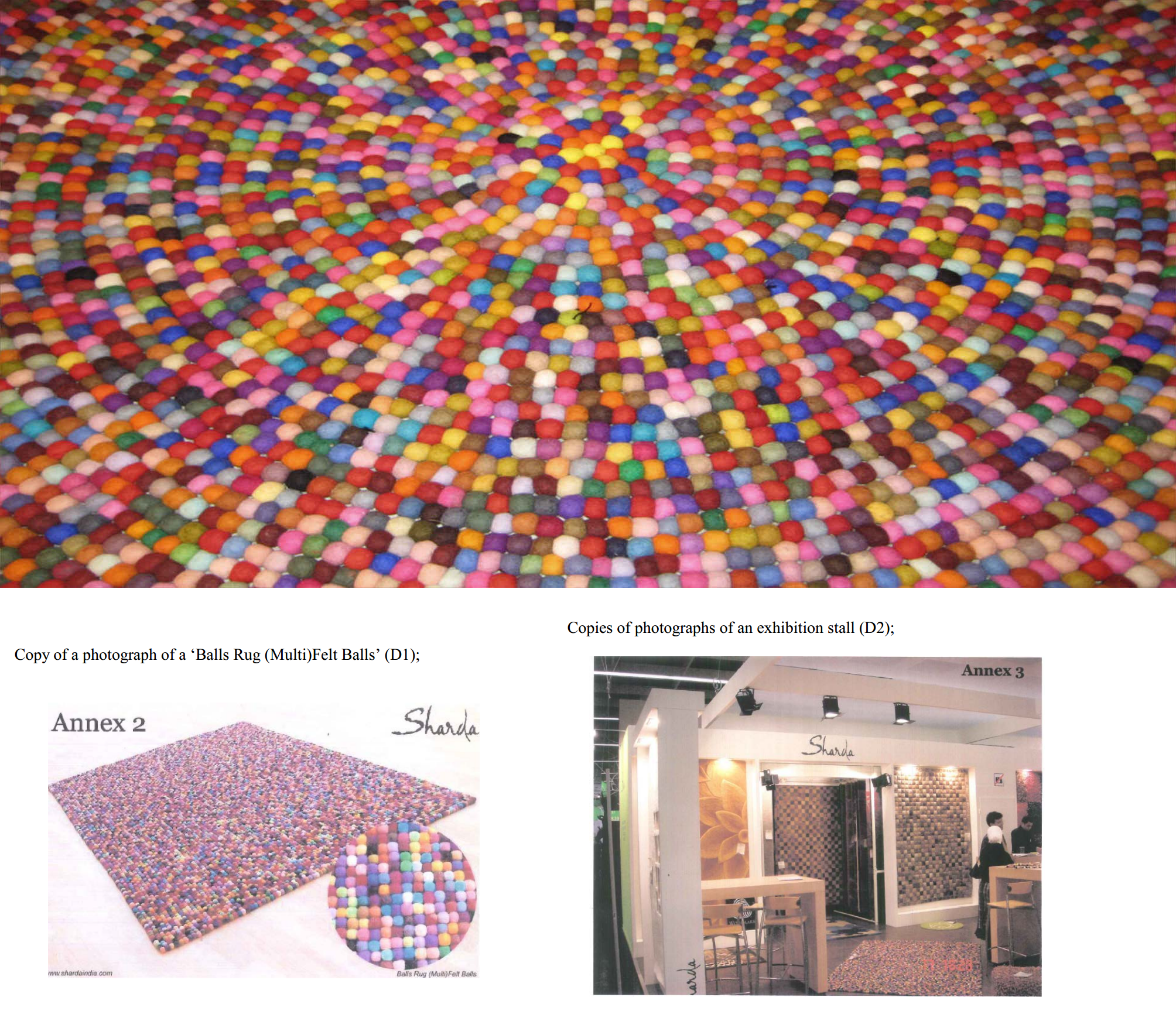OHIM: documenten die bestaan bewijzen tezamen
OHIM Board of Appeal 27 september 2012, R 991/2011-3 (BS Studio A/S tegen Naturkram Giot aps) (vloerkleed) Modellenrecht. Bewijs. BS Studio is houder van het Gemeenschapsmodellenrecht 819 313-0008 voor 'vloerkleden gemaakt van vilten bolletjes'. Naturkram Giot aps heeft met succes de nietigheid van het model verzocht op basis van artt. 4 - 9 CDR. Het bewijs zou onvoldoende zijn om van nieuwheidsschadelijke openbaarmaking te kunnen spreken, omdat de foto's ongedateerd zijn en het niet mogelijk is gelijkenis aan te tonen met het modellenrecht.
Modellenrecht. Bewijs. BS Studio is houder van het Gemeenschapsmodellenrecht 819 313-0008 voor 'vloerkleden gemaakt van vilten bolletjes'. Naturkram Giot aps heeft met succes de nietigheid van het model verzocht op basis van artt. 4 - 9 CDR. Het bewijs zou onvoldoende zijn om van nieuwheidsschadelijke openbaarmaking te kunnen spreken, omdat de foto's ongedateerd zijn en het niet mogelijk is gelijkenis aan te tonen met het modellenrecht.
Artikel 28(1)(b)(v) CDIR vraagt slechts om bewijs bestaande uit 'documents proving the existence of those earlier designs'.
14. Likewise, there are no provisions as to any compulsory form of evidence that must be furnished the Office, but it is clear from its wording that this list is not exhaustive (‘shall include the following’).
Onder verwijzing naar Heinz flacon T-450/08, worden de afbeelding uit de Sharda-folder, foto's van een expositie en een rekening gedateerd vóór de registratie van het model tezamen als voldoende bewijs aangenomen voor nieuwsheidsschadelijke prior design.
De verschillen in de specifieke rangschikking van de vilten balletjes geeft weinig betekenis aan de overall impression. De geïnformeerde gebruiker zal zich ervan bewust zijn dat de rangschikking het resultaat is van de verschillen in vormen van het uiteindelijke kleed. De beslissing wordt niet vernietigd.
21 Considered in their entirety, D1, D2 and D4 together prove that a rectangular rug made of multicoloured felt balls was disclosed within the meaning of Article 7(1) CDR prior to the filing date of the RCD.
26 The contested RCD is registered for rugs. Therefore, the informed user to be taken into account is he whoever habitually purchases rugs, puts them to their intended use and informs himself about the rugs available on the market by visiting furniture stores and browsing the Internet and the relevant catalogues.
Overall impression produced on the informed user30 The contested RCD and the prior design both show a rug made from a multitude of small, coloured felt balls with a random distribution of the different colours. They differ in that in the RCD the balls are arranged concentrically and in the prior design they are arranged in rows.
31 Both designs coincide in that they show a vividly coloured rug made of hundreds of small coloured felt balls. Taking into account the almost unlimited freedom of the designer in relation to rugs, the difference in the specific arrangement of the balls has only a minor impact on the overall impression produced by the designs. Moreover, the informed user will be aware that the different arrangements are the result of the differences in shape; a rectangular shape can only be obtained by arranging the balls in rows whereas a concentric arrangement will always result in a circular shape. As rightly held by the contested decision, the contested design therefore lacks individual character within the meaning of Article 6 CDR.
Op andere blogs:
Meubelrecht.nl (Wanneer moet je een product als model registreren? En wat zijn de vereisten voor modelbescherming?)


























































































